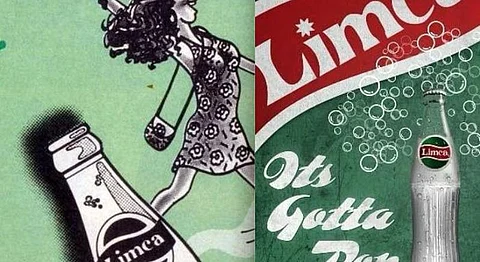
- HOMEGROWN WORLD
- #HGCREATORS
- #HGEXPLORE
- #HGVOICES
- #HGSHOP
- CAREERS
- ABOUT US
- CONTACT US

For as long as I can remember Limca has been my mom’s favourite drink and a drink I associate with hot summer days. For most Indians as well, the lime and lemony drink is often associated with the taste of summer, familiarity, and sweet nostalgia.
Perhaps it’s because nimbu paani has been a perennial favourite in Indian households and Limca is a playful spin on that known flavour.
But how did Limca make its way into the hearts and minds of the common Indian or even the Indian market for that matter.
The ‘veri veri lime & lemoni’ drink was first introduced by business tycoon Ramesh Chauhan of Parle Bisleri who approached Duke’s Lemonade. He requested them for the recipe of their lemon drink promising not to recreate it but was promptly turned down.
Chauhan went on to make his own formula and introduced his version of the lime drink as Limca. Thus Limca took birth in the factories in 1977.
This is from the time when Parle was closely associated with ‘Gluco Biscuits’ another nostalgic treat for many Indians. They were trying to venture into the beverage world first with their orange drink – ‘Gold Spot’ and then with the obvious progression to the lime drink.
Since Nimbu Paani was an already loved flavour, many were betting big on those flavours and so for Parle’s lime drink to stand apart it had to look, taste, and establish itself differently.
Parle was soon to create it with a cloudy look, one that we are familiar with even today. Naming it ‘Limca’ translating quite literally to limbu ka (made of lime).
Initially mocked as ‘soap water’ owing to its appearance it was soon to gain momentum and people were hooked onto the taste. In the beginning the drink was targeted towards upwardly mobile and women who wanted a fizzy, non-cola alternative to quench thirst while they were on the move. But Coca-Cola’s aggressive push into Indian markets meant Parle would have to compete harder.
The Post-emergency period in 1975 further drove a slowdown in cold drinks and Parle found it harder to sustain itself especially since the company had spent hugely on expansion plans as well as on setting up bottling units for Limca and Gold Spot.
The post-liberalisation and globalisation periods of the 90s only brought in Coca-Cola back to the Indian markets and they were soon to acquire local brands like Parle and with that Limca.
From the “Pyaas bujhaane wali limca” (thirst-quenching limca) days of the 1970s to the present day “Chadha Le Taazgi” Limca, the drink has been synonymous with spreading the joy of freshness and perhaps will always have a special place in our hearts and of course in our fridges.
If you liked this article we suggest you read:
